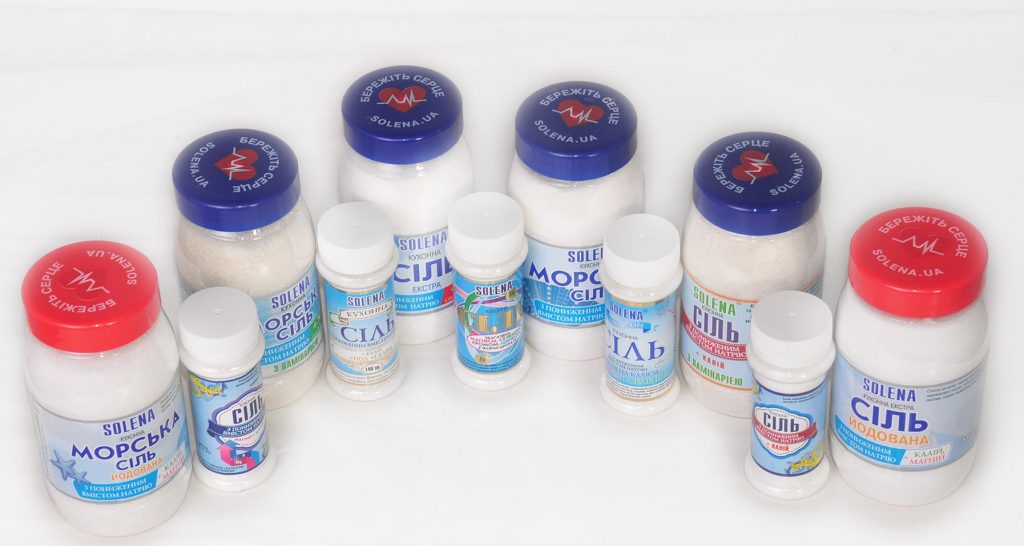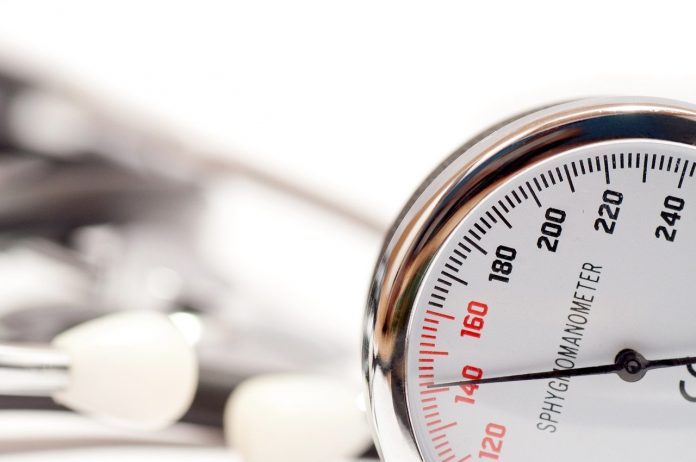Arterial pressure is a major factor in the occurrence of cardiovascular disease. How the wrong diet is associated with an increase in blood pressure - discussed in this article.
Water-salt exchange is a combination of processes of water and salt consumption (electrolytes), their absorption, distribution in internal environments and discharge from the body.
Sodium, Potassium and chlorine is the main element of the body's water-salt metabolism, so the disruption of the consumption of these minerals leads to a disruption of water-salt metabolism and to various diseases, including cardiovascular disease (CDC).
Consider the properties of sodium and potassium and their role in the body
Sodium is needed for normal water exchange between blood cells and tissues, to maintain acid-alkaline balance in the body, transmission of nerve impulses, to ensure muscle contraction. Also, sodium is the main mineral of blood, which has an important property - to hold water. One sodium molecule can hold up to 400 water molecules.
Potassium is the main mineral of the cell. It is the main regulator of many processes in our body, such as maintaining normal blood pressure, normalizing the excretion of the kidneys, maintaining the acid-alkaline balance of the blood, transmission of nerve impulses, maintaining water-salt balance inside and outside cells, etc.
Therefore, the imbalance of sodium and potassium in nutrition, namely the increase in sodium intake potassium deficiency, leads to fluid retention and increased blood volume.
 And the increase in blood volume leads to an increase in blood pressure (AD).
And the increase in blood volume leads to an increase in blood pressure (AD).
Increased blood pressure, in turn, causes damage to blood vessels and various CTA.
We exceed the norm
According to studies, in Ukraine the average sodium intake in table salt exceeds the norm by 2-3 times. Nutritionists warn that large amounts of salt are already found in ready-made foods such as bread and bakery, pasta, cheese and sausage products, sauces and seasonings.
 Consequently, the proportion of sodium/potassium intake in the diet is disturbed. Instead of 2g of sodium /3.5g of potassium, according to the norm, we have a ratio of 6g sodium/2.5-3 g of potassium.
Consequently, the proportion of sodium/potassium intake in the diet is disturbed. Instead of 2g of sodium /3.5g of potassium, according to the norm, we have a ratio of 6g sodium/2.5-3 g of potassium.
A number of studies have shown that when salt intake is exceeded, the sensitivity to salt is also reduced, leading to increased salt intake.
From this it becomes clear why more than 40% of the population of Ukraine have high blood pressure. And also why Ukraine ranks first in Europe not only in terms of deaths from the GCC (more than 500,000 deaths per year), but also in deaths from the GCC associated with excess consumption of table salt (more than 100,000 deaths per year).
 To combat hypertension and to bring blood pressure back to normal, doctors prescribe medications that aim to remove excess sodium from the body and reduce potassium deficiency.
To combat hypertension and to bring blood pressure back to normal, doctors prescribe medications that aim to remove excess sodium from the body and reduce potassium deficiency.
With potassium deficiency in the diet, it is difficult for the body to withdraw excess sodium. Therefore, lack of potassium in the diet when excess sodium intake can be the cause of high blood pressure.
Properties of sodium and potassium in the diet were taken into account by the Finns in the implementation of the population health program "North Kareliathat lasted more than 25 years.
Finnish salt for healthy eating
At the time of the start of the North Karelia project, Finland was the country with the highest mortality from cardiovascular disease in the world. Reducing the consumption of table salt from 16g to 8-9g per day (norm 5-6g) and reducing potassium deficiency contributed to a 10-fold reduction in mortality from the NHS and an increase in life expectancy by 13 years. (More in book by the authors of the project "North Karelia Project: from North Karelia to a national project").
An adviser to the Finnish Minister of the Ministry of Health told TSN how the Finns managed to reduce their deaths from cardiovascular diseases by 10 times.
To achieve the Finns such results helped by a simple way - replacing sodium salt in the diet with salt, which instead of sodium salt was 30% potassium salt. This mixture of sodium and potassium salts in a 70/30 proportion was called salt with reduced sodium content.
Finns began to use this salt, starting with school meals.
Such an easy way helped the Finns to improve the population country.
 The World Health Organization (WHO) on 24 July 2020 Site she called on European countries to accelerate measures to reduce the population's consumption of sodium salt by 30%. WHO also called on countries to support the direction of replacing sodium salt with salt, similar to Finnish, in food production. By WHO, such a replacement will contribute to the prevention of hypertension and GCC.
The World Health Organization (WHO) on 24 July 2020 Site she called on European countries to accelerate measures to reduce the population's consumption of sodium salt by 30%. WHO also called on countries to support the direction of replacing sodium salt with salt, similar to Finnish, in food production. By WHO, such a replacement will contribute to the prevention of hypertension and GCC.
In other words, WHO has taken into account Finland's experience in its recommendations and appeals.
Ukraine in this sense is lucky. Now salt with reduced sodium content can be purchased not only in stores, but also ordered online.
Since 2014, salt, similar to Finnish, is produced in Ukraine under the brand name SOLENA.

Today, more than 10 different salt formulations of SOLENA are produced.
SOLENA salt is a mixture of sodium and potassium salts in a 70/30 proportion with the addition of micronutrient deficiencies such as magnesium, selenium, iodine, zinc and chromium.
Salt producer SOLENA hopes, given the results of Finnish historical experience, that such salt will save thousands of Ukrainians from the GCC; will be used in healthy eating as well as for the prevention of hypertension and other GSDs.
Where to buy SOLENA salt - find out here.
Reduce sodium salts to normal and reduce potassium deficiency in nutrition will help salt Solena with a low sodium content (70% sodium salt, 30% potassium salt). Click to see where to buy salt SOLENA.






